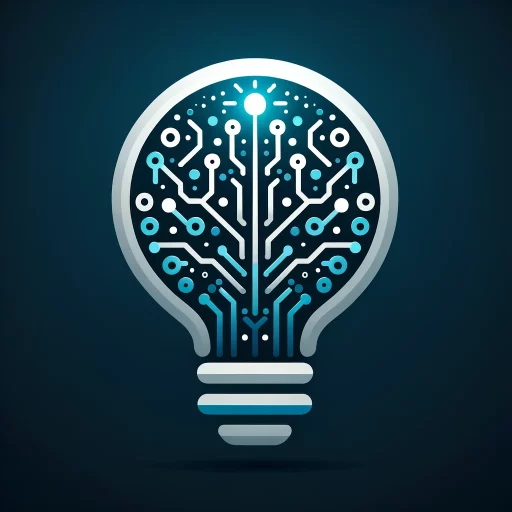Unleashing Creativity with ChatGPT: Generating New Ideas
In an era where creativity is a prized asset across various fields, the advent of advanced AI models like ChatGPT has introduced a new paradigm for idea generation. ChatGPT, developed by OpenAI, is a sophisticated language model that leverages deep learning to understand and generate human-like text. Its capabilities extend far beyond simple query responses, positioning it as a powerful tool for stimulating creativity and generating new ideas.
A Catalyst for Creative Thinking
One of the primary ways ChatGPT can enhance creativity is by serving as a catalyst for creative thinking. Writers, artists, and innovators often face creative blocks that can halt their progress. ChatGPT can help overcome these obstacles by providing fresh perspectives and suggestions. For instance, a writer stuck on developing a plot twist can input a brief synopsis into ChatGPT, which can then generate multiple plot development options. These suggestions can inspire the writer to explore new directions they might not have considered. For example, if an author is struggling with the climax of a mystery novel, ChatGPT might suggest introducing a hidden antagonist or an unexpected ally, providing a fresh angle that revitalizes the storyline.
Idea Expansion and Brainstorming
ChatGPT excels in expanding on initial ideas, making it a valuable brainstorming partner. For businesses looking to innovate, ChatGPT can generate a wide array of ideas from a simple prompt. Suppose a tech startup wants to brainstorm features for a new app. By inputting basic concepts into ChatGPT, the team can receive detailed feature suggestions, potential user scenarios, and even marketing strategies. For instance, a team developing a health tracking app might input general concepts like “user engagement” and “habit tracking,” and ChatGPT could suggest features like personalized reminders, gamification elements, and community challenges to enhance user experience and retention.
Cross-Disciplinary Innovation
Innovation often arises at the intersection of different fields. ChatGPT’s extensive training on diverse datasets enables it to draw connections between seemingly unrelated domains. An architect might seek novel design inspirations and input a prompt related to natural phenomena or historical structures. ChatGPT can then synthesize information from these varied fields to suggest innovative design concepts that blend elements from nature and history. For example, an architect could receive suggestions for a building design that incorporates the organic forms of a seashell with the structural principles of ancient Roman aqueducts, leading to a unique and functional architectural marvel.
Enhancing Collaboration
Collaboration is a cornerstone of creative endeavors, and ChatGPT can enhance this process by acting as a neutral mediator. In group settings, where differing opinions and perspectives can sometimes stall progress, ChatGPT can provide impartial input that helps unify the team’s vision. By generating balanced suggestions based on the collective input of the group, ChatGPT can facilitate consensus and drive the project forward. For instance, in a marketing team brainstorming session, ChatGPT could synthesize ideas from various members and propose a comprehensive campaign that incorporates elements from each suggestion, ensuring everyone’s input is valued and considered.
Overcoming Language Barriers
Globalization has made cross-cultural collaboration more common, but language barriers can impede the flow of ideas. ChatGPT’s multilingual capabilities can bridge this gap by translating and generating content in multiple languages. This feature ensures that valuable insights and creative inputs are not lost in translation, fostering a more inclusive and diverse creative process. For example, a team of international researchers working on a global health initiative can use ChatGPT to translate complex medical research papers, ensuring that all team members, regardless of their native language, can fully contribute to the project.
Personalized Creativity Boost
Individuals seeking a personal creativity boost can also benefit from ChatGPT. By tailoring the interaction based on personal preferences and goals, ChatGPT can provide customized prompts and exercises that stimulate creative thinking. Whether it’s a poet seeking metaphors, a musician looking for lyrical inspiration, or a game developer brainstorming characters, ChatGPT can adapt its responses to suit the specific needs of the user. For instance, a musician struggling with writer’s block might ask ChatGPT for lyrical themes related to “resilience and hope,” and receive a range of poetic phrases and narrative ideas to inspire new songs.
Ethical Considerations and Human Oversight
While ChatGPT offers numerous benefits, it is crucial to maintain human oversight in the creative process. AI-generated ideas should complement, not replace, human creativity. Ethical considerations, such as ensuring the originality of content and avoiding biases, are paramount. Users must critically evaluate and refine the AI’s suggestions to ensure they align with ethical standards and their creative vision.
Conclusion
ChatGPT stands as a powerful ally in the quest for creativity, offering a wealth of possibilities for generating new ideas. By acting as a catalyst for creative thinking, enhancing brainstorming sessions, facilitating cross-disciplinary innovation, and overcoming language barriers, ChatGPT can significantly augment human creativity. As we navigate the evolving landscape of AI, the synergy between human ingenuity and AI capabilities promises to unlock new horizons of creative potential.
